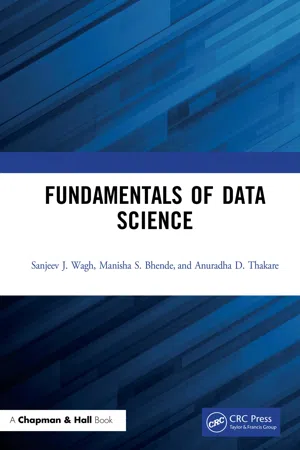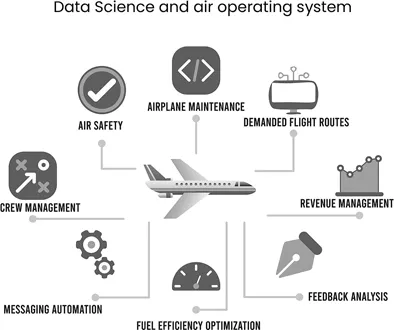
- 264 pages
- English
- ePUB (mobile friendly)
- Available on iOS & Android
Fundamentals of Data Science
About this book
Fundamentals of Data Science is designed for students, academicians and practitioners with a complete walkthrough right from the foundational groundwork required to outlining all the concepts, techniques and tools required to understand Data Science.
Data Science is an umbrella term for the non-traditional techniques and technologies that are required to collect, aggregate, process, and gain insights from massive datasets. This book offers all the processes, methodologies, various steps like data acquisition, pre-process, mining, prediction, and visualization tools for extracting insights from vast amounts of data by the use of various scientific methods, algorithms, and processes
Readers will learn the steps necessary to create the application with SQl, NoSQL, Python, R, Matlab, Octave and Tablue.
This book provides a stepwise approach to building solutions to data science applications right from understanding the fundamentals, performing data analytics to writing source code. All the concepts are discussed in simple English to help the community to become Data Scientist without much pre-requisite knowledge.
Features :
- Simple strategies for developing statistical models that analyze data and detect patterns, trends, and relationships in data sets.
- Complete roadmap to Data Science approach with dedicatedsections which includes Fundamentals, Methodology and Tools.
- Focussed approach for learning and practice various Data Science Toolswith Sample code and examples for practice.
- Information is presented in an accessible way for students, researchers and academicians and professionals.
Frequently asked questions
- Essential is ideal for learners and professionals who enjoy exploring a wide range of subjects. Access the Essential Library with 800,000+ trusted titles and best-sellers across business, personal growth, and the humanities. Includes unlimited reading time and Standard Read Aloud voice.
- Complete: Perfect for advanced learners and researchers needing full, unrestricted access. Unlock 1.4M+ books across hundreds of subjects, including academic and specialized titles. The Complete Plan also includes advanced features like Premium Read Aloud and Research Assistant.
Please note we cannot support devices running on iOS 13 and Android 7 or earlier. Learn more about using the app.
Information
Part I
Introduction to Data Science
1
Importance of Data Science
1.1 Need for Data Science

Autonomous vehicles.

Data science and airline industries.

Use of data science in an airline operating system.
Table of contents
- Cover
- Half Title
- Title Page
- Copyright Page
- Table of Contents
- Preface
- Author
- Part I Introduction to Data Science
- Part II Data Modeling and Analytics
- Part III Platforms for Data Science
- Index